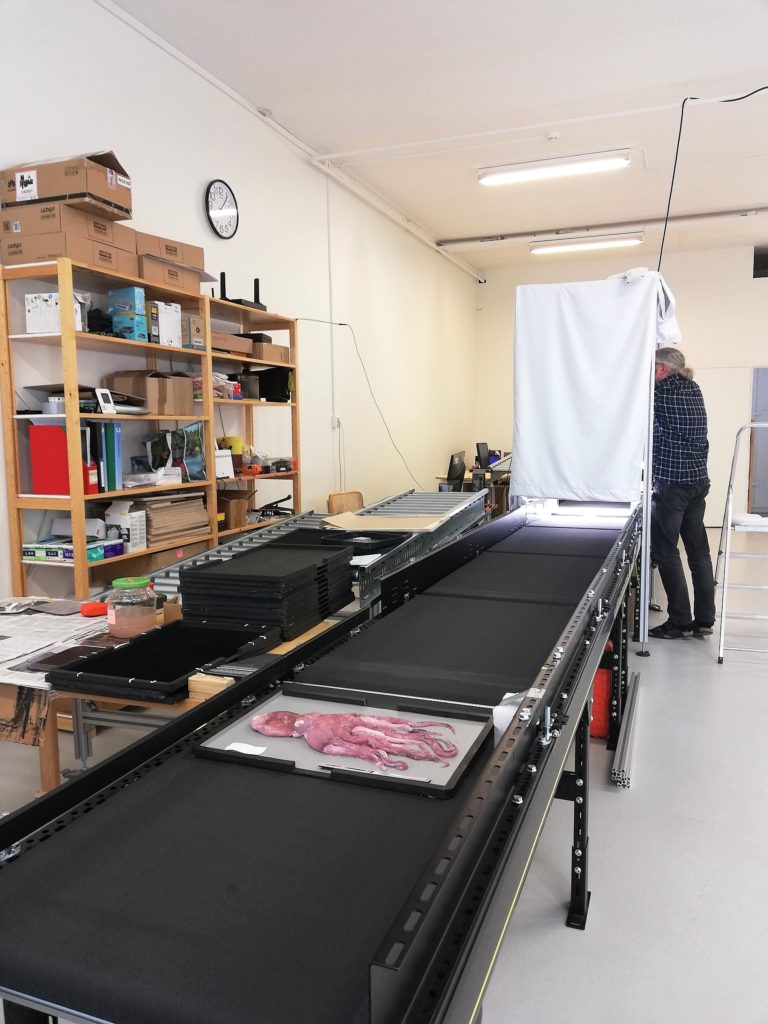Technical details
Imaging samples stored in liquids is a complex task since imaging wet or floating specimens poses challenges, especially when it comes to avoiding reflections in the images. To carry out this testing process, it has been necessary to change the lighting, test different containers that carry the specimens, evaluate the color and texture of the backgrounds, play with the exposure times and adapt the height of the camera according to the size of the specimens. To make the results as realistic as possible, we kept our test specimens (acquired from seafood shops in Finland) in a 70% ethanol solution for a period of two weeks.
We have had very interesting results so far, so we will continue working on the testing process. Certainly we now believe that the possible applications of our digitization systems can become much more versatile, for this aim we must put into operation a plan of experiments that will lead us to new techniques ensuring the best results in terms of efficiency and image quality.
All the images were made with a Nikon Z7 mirrorless 45 megapixel camera and its Nikon 24-70 mm f/4 zoom lens. The images below have been reduced to half of the original size because of our hosted website’s technical restrictions. To see them, follow the link below the image, then use your browser’s View Image function, zoom in, and be amazed!
The picture below shows our conveyor-driven imaging line and our engineer adjusting the camera for a unusually large object.






